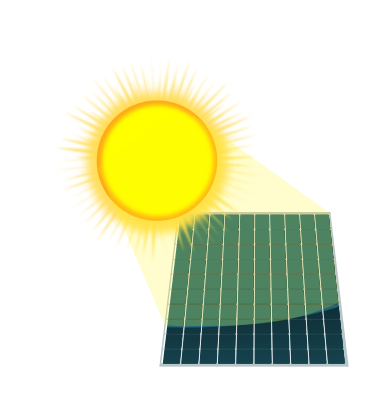
Your first sentence is true but not really relevant to this thread. As another commenter pointed out, it’s possible she doesn’t have the most articulated politics. To expect or assume otherwise is to put her on a pedestal.
Mastodon https://kolektiva.social/@SteveKLord
Pixelfed https://anar.chi.st/SteveKLord
Letterboxd https://letterboxd.com/steveklord/
Matrix https://matrix.to/#/@steveklord:matrix.org XMPP steveklord@yax.im

Your first sentence is true but not really relevant to this thread. As another commenter pointed out, it’s possible she doesn’t have the most articulated politics. To expect or assume otherwise is to put her on a pedestal.

I’m aware of the context. I still disagree. This is a person who’s been struggling because of the impact of fame on her personal life and been begging to be treated like a regular person and I think putting her on a pedestal by assuming she’s a political expert or pundit isn’t honoring that. She gave her answer. That’s all.

That’s a valid interpretation although not an objective one or one I share given the rest of her delivery and vague discussion of “policies” .

She referred to the Democratic Party as “The Left” which makes it pretty hard to take any political commentary from her too seriously.


Sir you are commenting in the wrong thread and the wrong community. Why do that here? I am not a moderator here. I did read all the comments a month ago when the discussion was current and active. You commented here in a combative way and then specifically went to an older post of mine and told me what "should be obvious to " me without any discussion of why or otherwise adding anything constructive. You received several downvotes and were asked to be more constructive. Instead you’ve doubled down here and repeated the insult.


You seem to have missed the point of the article as it in no way was trying to propose more labor for working class people. In many ways it is trying to overcome the oppressive image that you have in your head. To a large extent, these changes are trying to advance human progress by overcoming the crises we find ourselves facing. You were born in 1953? That makes you about 70-71 but your profile says you’re 66 years old. That’s an odd inconsistency.


As a moderator of this community I need to remind you that non-constructive personal criticisms like this are inappropriate and go against the ethics and guidelines of this instance, let alone Lemmy. Honestly.


Thanks for clarifying that. That publication can be prone to clickbait style headlines it seems but they also publish some good information overall and I thought it was worth noting


I’ve also recently added active member @CounselingTechie@slrpnk.net to the moderation team of the Lunarpunk community


The enzymes that create Bioluminescence are called Lucifererins. Various animals have them for different reasons like protection . There seems to be debate about why exactly they evolved in so many species of fungi . It says here
Why did certain fungi evolve to glow in the dark? One prevailing theory is spore dispersal, as mentioned. Insects and other small creatures, lured by the glow, inadvertently pick up spores and transport them to new locations. However, there’s another intriguing theory: it’s a method to deter herbivores. The glow could signal potential toxicity, steering clear grazers that might otherwise feast on the mushroom.
Another fascinating hypothesis posits that bioluminescence helps the mushroom conserve energy. By emitting light, the fungi might attract insects that feed on its competitors, giving the glowing mushroom a survival edge.


I think they have sold the last batch of the season but more will be available in 2025 and I think they may be working on other types of bioluminescent plants. https://light.bio/


Thank you for the tips! Mine doesn’t get the best light inside so I have been leaving it outside this summer to get its suggested amount of direct sunlight. Maybe that’s been hard for it. I’ll try to be patient and follow your thoughtful suggestions.


That’s interesting. I’m in the northeast near Boston and the results have been inconsistent leaving it outside although I’ve given it good soil, fertilizer and direct sunlight. It’s not doing great right now but doing its best to hang in there.


Yeah I’ve been struggling to keep mine alive as well. I repotted it and was able to revive it and then all the flowers died and one of the branches. I’m trying to give it lots of direct sunlight right now but it does seem like they’re pretty delicate if not in perfect conditions and the shipping possibly traumatizes them


Yeah, true in many cases. The post was about Cameron so that’s the only director I’m addressing at the moment but the industry is definitely filled with people using their “art” to excuse their bad and often abusive behavior like you said. There’s a lot of very concentrated power to abuse.


Cameron has an awful reputation for how he treats people on set and you really see it start to come out here pretty quickly . He’s hostile and dismissive the moment any criticism is mentioned whether it be from Roland Emerich when he tells the reporter to “move on”, proving the “overbearing” criticism right, or that anyone who criticizes his transfers as needing to “move out of mom’s basement”. His films are often awe-inspring but he’s been called “a nightmare to work with” and “autocratic” on set.
Cool! It would be nice to hear directly from them about their research and how this instance fits into it but at least we have the their results and this interview to give an overall perspective.


While it uses water for cooling, it says nothing about adding moisture to the air. It does mention removing moisture from the air, though
Blue Frontier’s cooling units pass a stream of air over a thin layer of the desiccant, which pulls moisture out of the air. That dry air is then used in an evaporative cooling process (similar to the way sweat cools your skin).


I bet that would look amazing with the lights off at night. It is pretty amazing how little we know about the depths of the ocean and how commom bioluminescence is
I brought up fame to reassert her desire to be just like everyone else which I believe you misunderstood. Please don’t lash out and make this personal when this is a place for open discussion. I have heard your opinion and I disagree. I am not saying what is allowed, that’s a moderator’s job, so much as asking for a clear discussion on the topic brought up. No need to further it by throwing insults back and forth